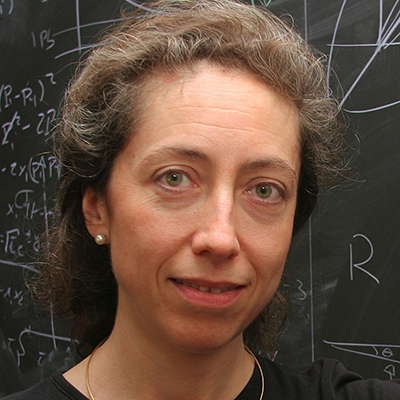
When the Royal Swedish Academy of Sciences awarded the Nobel Prize in physics this morning to theorists Peter Higgs and Francois Englert to recognize their work developing the theory of what is now known as the Higgs field, which gives elementary particles mass, Florida State University researchers had a special reason to celebrate.
Harrison Prosper, the Kirby Kemper Professor of Physics, Professor Laura Reina, Professor Todd Adams and Assistant Professor Andrew Askew, all members of Florida State’s Department of Physics, are among the U.S. scientists who played a significant role in advancing the theory and in discovering the particle that proves the existence of the Higgs field, the Higgs boson.
“The involvement of our researchers in the remarkable discovery of the Higgs boson is a testament to the high-caliber scientific talent we have here at Florida State University,” said Vice President for Research Gary K. Ostrander. “My congratulations go out to them and the rest of the scientists from around the world on this well-earned Nobel Prize award. Proving this elusive theory has set us on a path of unimaginable scientific advancement in the years ahead.”
In the 1960s, Higgs and Englert along with other theorists, including Robert Brout, Tom Kibble and Americans Carl Hagen and Gerald Guralnik, published papers introducing key concepts in the theory of the Higgs field. In 2012, scientists on the international ATLAS and Compact Muon Solenoid, or CMS, experiments, performed at the Large Hadron Collider at the CERN laboratory in Europe, confirmed this theory when they announced the discovery of the Higgs boson.
Nearly 2,000 physicists from 89 U.S. universities — including Florida State University — and seven U.S. Department of Energy laboratories participate in the ATLAS and CMS experiments, making up about 23 percent of the ATLAS collaboration and 33 percent of CMS at the time of the Higgs discovery. Brookhaven National Laboratory serves as the U.S. hub for the ATLAS experiment, and Fermi National Accelerator Laboratory serves as the U.S. hub for the CMS experiment. U.S. scientists provided a significant portion of the intellectual leadership on Higgs analysis teams for both experiments.
“The search for evidence of the Higgs boson was a major undertaking that spanned decades and continents,” said Adams, a high-energy experimentalist and CMS collaborator. “The discovery in 2012 of this particle was truly exciting for everyone. The Florida State University team working on CMS contributed in numerous ways to the discovery. We are very happy that this theory and discovery has been recognized by the Nobel committee.”
The discovery of a Higgs particle last summer stands as one of the most amazing physics results of the last several decades, according to Reina, a high-energy physics theorist who uses state-of the art theoretical predictions to perform calculations of the production of Higgs particles atthe Large Hadron Collider.
“It is a milestone in the understanding of the fundamental interactions of elementary particles and clears the path toward new groundbreaking discoveries,” she said. “There is no question in my mind that the original proposers of the simple and elegant idea that suggested the possible existence of a Higgs particle had to be recognized with the highest recognition, and I hope everybody in our field and beyond can share their joy and excitement.”
Prosper, a high-energy physics experimentalist and CMS collaborator, agreed.
“This discovery may turn out to be a watershed in the history of physics, and I am absolutely thrilled that Florida State University played a role in this,” he said. “Hands down, it is the most exciting event in my scientific career.”
The majority of U.S. scientists participating in LHC experiments work primarily from their home institutions, remotely accessing and analyzing data through high-capacity networks and grid computing. The United States plays an important role in this distributed computing system, providing 23 percent of the computing power for ATLAS and 40 percent for CMS.
The United States also supplied or played a leading role in several main components of the two detectors and the LHC accelerator, amounting to a value of $164 million for the ATLAS detector, $167 million for the CMS detector and $200 million for the LHC. Support for the U.S. effort comes from the U.S. Department of Energy Office of Science and the National Science Foundation.
Higgs and Englert published their papers independently and did not meet in person until the July 4, 2012, announcement of the discovery of the Higgs boson at CERN. Higgs, 84, is a professor emeritus at the University of Edinburgh in Scotland. Englert, 80, is a professor emeritus at Universite libre de Bruxelles in Belgium.




